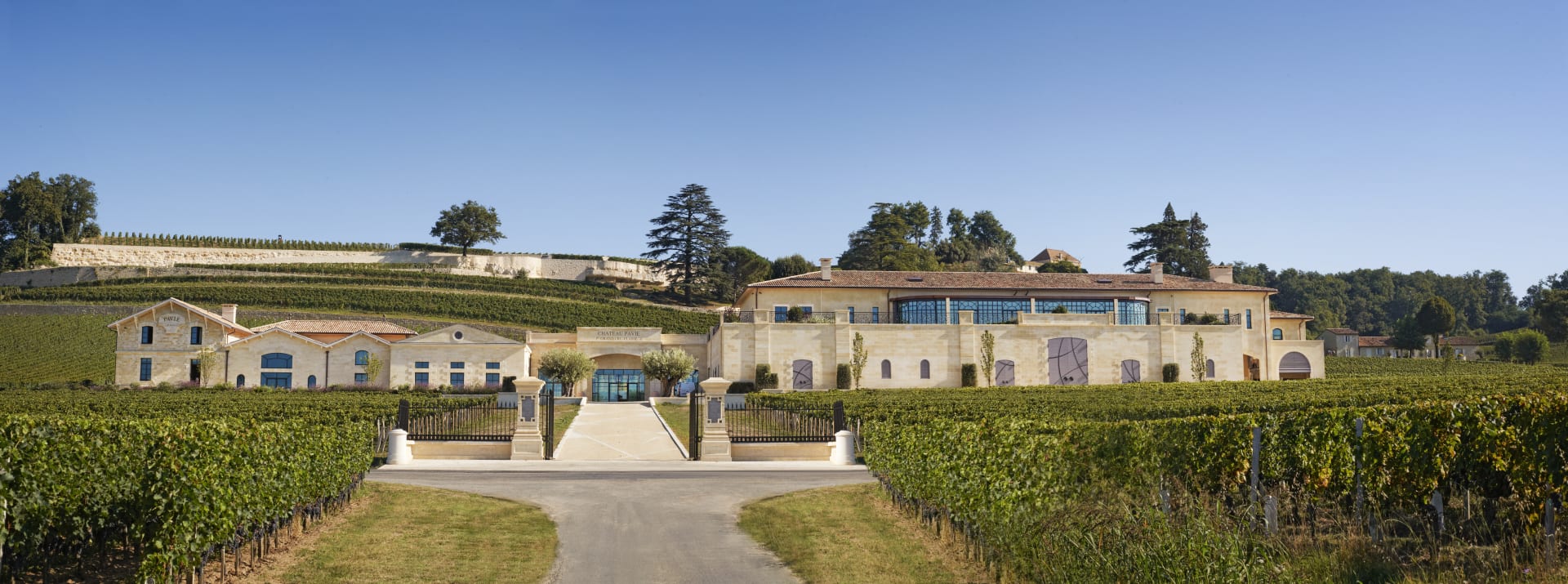Chateau Pavie (6 Bottes in OWC) 2019
-
Robert
Parker -
Jeb
Dunnuck -
Wine
Enthusiast -
James
Suckling -
Wine
Spectator - Decanter



Product Details
Your Rating
Somm Note
Winemaker Notes
Blend: 50% Merlot, 32% Cabernet Franc, 18% Cabernet Sauvignon
The Barrel Sample for this wine is above 14% ABV.
Professional Ratings
-
Robert Parker's Wine Advocate
The 2019 Pavie is a blend of 50% Merlot, 32% Cabernet Franc and 18% Cabernet Sauvignon, harvested from the 30th of September to the 11th of October. The yields this year were 35 hectoliters per hectare, and the alcohol came in at 14.73%, while the pH was 3.55 (remarkably low!). Very deep garnet-purple in color, the nose opens with a beguiling array of intertwined earth and black fruit scents: baked plums, black cherry preserves, tilled soil, black truffles, mossy tree bark and mulberries with nuances of allspice, clove oil, espresso and cedar chest. Full-bodied, densely packed and with a rock-solid structure, the constrained flavor layers are just waiting to explode; it's framed by firm, exquisitely ripe, rounded tannins and this vineyard's signature freshness, finishing with epic length and depth. Quaking with latent power and shimmering with a kaleidoscope of electric flavors, this could only be Pavie.
Barrel Sample: 97-100 -
Jeb Dunnuck
The grand vin, the 2019 Château Pavie is based on 50% Merlot, 32% Cabernet Franc, and 18% Cabernet Sauvignon, continuing the trend toward less Merlot in the final blend. Brought up in 80% new French oak (this has also decreased over the past handful of years), it reveals an inky purple/blue hue as well as a fresh, vivid bouquet creme de cassis, toasted spice, violets, chocolate, and graphite. Just a rich, sexy, full-bodied wine, it stays straight and focused on the palate, with silky tannins, perfectly integrated acidity, and flawless balance. It's going to be drinkable with just short-term cellaring yet still evolve beautifully for 30 years.
Barrel Sample: 97-99 -
Wine Enthusiast
This wine has an aristocratic air. The tannins and fruit flavors are rich but not showy, indicating how this estate has found its stride. With its firm structure and bold black fruit tones, it is going to be a wine for long-term aging.
Barrel Sample: 97-99 -
James Suckling
A perfumed nose of cherries, blueberries, cedar, toast, cloves and walnuts. Full-bodied with a firm, beautiful frame of fine-grained tannins. Layered and elegant. Intense, powerful and spicy. Dark and intriguing, with wonderful presence in the glass. Keeps going. Only 2 hectares in production because 1.5 hectare replanted.Best from 2027.
-
Wine Spectator
Dreamy right from the start, with a seductive mouthfeel to its mix of raspberry puree, cassis and creamed plum flavors infused with rooibos tea, black licorice and alder accents. Long and extremely fine-grained through the finish, with subtle floral lift and a lingering hint of chalky minerality. Gorgeous. Merlot, Cabernet Franc and Cabernet Sauvignon.
-
Decanter
Excellent quality Pavie, rippling with black fruits. Notably more subdued than in some vintages as the team looks to reframe just slightly the bulging muscles of the past, and as the high levels of Cabernet Sauvignon and Franc make an impact. It takes a moment to adjust to, but when you sit with it, you feel a rippling frame to the wine, and a juicy central core. Fleshy cassis and blackberry fruits, slate walls and black truffle overlay. Is going to age extremely well.
Other Vintages
2022-
Jeb
Dunnuck -
James
Suckling - Vinous
- Decanter
- Vinous
-
Jeb
Dunnuck -
James
Suckling - Decanter
-
James
Suckling -
Jeb
Dunnuck -
Robert
Parker - Decanter
-
Wine
Spectator -
Wine
Enthusiast
-
Jeb
Dunnuck -
James
Suckling -
Robert
Parker -
Wine
Spectator -
Wine
Enthusiast - Decanter
-
Jeb
Dunnuck -
Robert
Parker -
Wine
Spectator -
James
Suckling - Decanter
-
Wine
Enthusiast
-
Robert
Parker -
James
Suckling -
Jeb
Dunnuck -
Wine
Spectator -
Wine
Enthusiast
-
James
Suckling -
Jeb
Dunnuck -
Robert
Parker -
Wine
Spectator -
Wine
Enthusiast - Decanter
-
Wine
Spectator -
James
Suckling -
Wine
Enthusiast -
Robert
Parker - Decanter
-
Wine
Enthusiast -
James
Suckling -
Robert
Parker -
Wine
Spectator
-
Wine
Spectator -
Robert
Parker -
James
Suckling -
Wine
Enthusiast
-
Jeb
Dunnuck -
Robert
Parker -
James
Suckling -
Wine
Spectator
-
Robert
Parker -
James
Suckling -
Wine
Spectator -
Wine
Enthusiast
-
Robert
Parker -
James
Suckling -
Wine
Enthusiast -
Wine
Spectator
-
James
Suckling -
Robert
Parker -
Wine
Spectator -
Wine
Enthusiast -
Wine &
Spirits
-
Jeb
Dunnuck -
Robert
Parker -
Wine
Spectator
-
Wine &
Spirits -
Wine
Spectator -
Robert
Parker
-
Robert
Parker -
Wine
Spectator
-
Robert
Parker -
Wine
Spectator
-
Robert
Parker -
Wine
Spectator
-
Robert
Parker -
Jeb
Dunnuck -
Wine
Spectator -
Wine
Enthusiast
-
Robert
Parker -
Wine
Spectator
-
Robert
Parker -
Wine &
Spirits
-
Wine
Spectator







Established on the splendid “Côte Pavie”, the vineyard of Château Pavie was planted by the roman in the 4th century who first saw the incredible potential of this terroir. The history of the property goes back to 1850 when the Pimpinelle estate was owned by Mr Fayard and Mr Chapus who, thanks to their work, managed to obtain a gold medal at the Paris World Fair.
Less than ten years later, it was bequeathed to Ferdinand Bouffard, a Bordeaux merchant who, in twenty years, managed to build up a 50-hectare estate by buying up several properties. Just after the war, it was bought by Albert Porte when Ferdinand Bouffard passed away. By unifying the properties of Mr. Bouffard, he created Château Pavie (The name comes from a particularly sweet and juicy peach variety that was growing on the slope).
Alexandre Valette took over in 1943 and succeeded in raising it to the rank of Premier Grand Cru Classé B in 1955. His grandson, who had taken over in 1957, sold it to Gérard Perse in 1998 who is still the owner today. Thanks to major investments in both the vineyard and the cellar and to additional work towards maturity and precision, the latter managed to raise his estate to the rank of Premier Grand Cru Classé “A” during the revision of the classification of Saint-Emilion wines in 2012.
The magnificence of Château Pavie comes from its exceptional terroir (37 hectares planted in one block) made of limestone, clay and sand-clay, with over 80 meters of altitude variation offering a multitude of micro-terroir, with mostly south exposure, where the typical grape varieties of the right bank (Merlot, Cabernet Franc and Cabernet Sauvignon) achieve perfect maturity.

One of the world’s most classic and popular styles of red wine, Bordeaux-inspired blends have spread from their homeland in France to nearly every corner of the New World. Typically based on either Cabernet Sauvignon or Merlot and supported by Cabernet Franc, Malbec and Petit Verdot, the best of these are densely hued, fragrant, full of fruit and boast a structure that begs for cellar time. Somm Secret—Blends from Bordeaux are generally earthier compared to those from the New World, which tend to be fruit-dominant.

Marked by its historic fortified village—perhaps the prettiest in all of Bordeaux, the St-Émilion appellation, along with its neighboring village of Pomerol, are leaders in quality on the Right Bank of Bordeaux. These Merlot-dominant red wines (complemented by various amounts of Cabernet Franc and/or Cabernet Sauvignon) remain some of the most admired and collected wines of the world.
St-Émilion has the longest history in wine production in Bordeaux—longer than the Left Bank—dating back to an 8th century monk named Saint Émilion who became a hermit in one of the many limestone caves scattered throughout the area.
Today St-Émilion is made up of hundreds of independent farmers dedicated to the same thing: growing Merlot and Cabernet Franc (and tiny amounts of Cabernet Sauvignon). While always roughly the same blend, the wines of St-Émilion vary considerably depending on the soil upon which they are grown—and the soils do vary considerably throughout the region.
The chateaux with the highest classification (Premier Grand Cru Classés) are on gravel-rich soils or steep, clay-limestone hillsides. There are only four given the highest rank, called Premier Grand Cru Classés A (Chateau Cheval Blanc, Ausone, Angélus, Pavie) and 14 are Premier Grand Cru Classés B. Much of the rest of the vineyards in the appellation are on flatter land where the soils are a mix of gravel, sand and alluvial matter.
Great wines from St-Émilion will be deep in color, and might have characteristics of blackberry liqueur, black raspberry, licorice, chocolate, grilled meat, earth or truffles. They will be bold, layered and lush.
